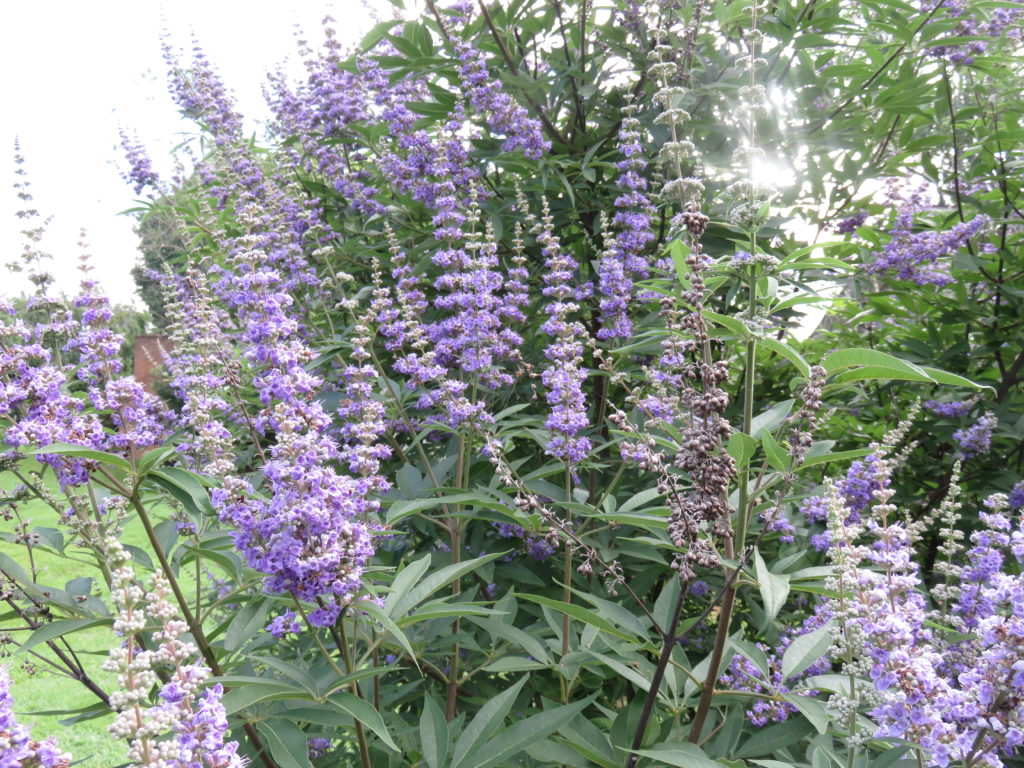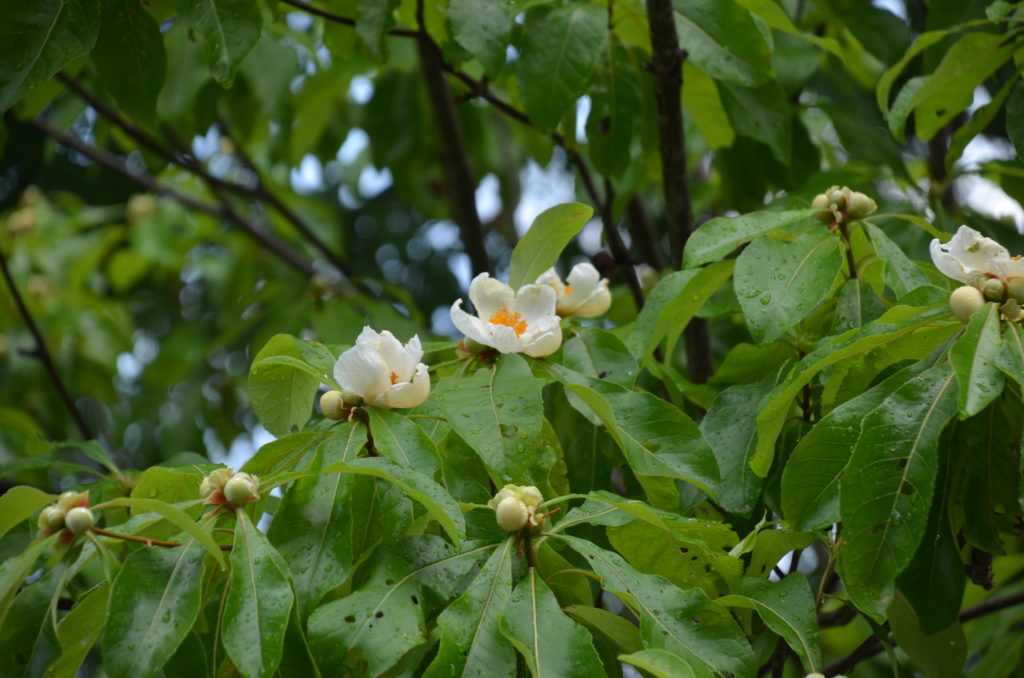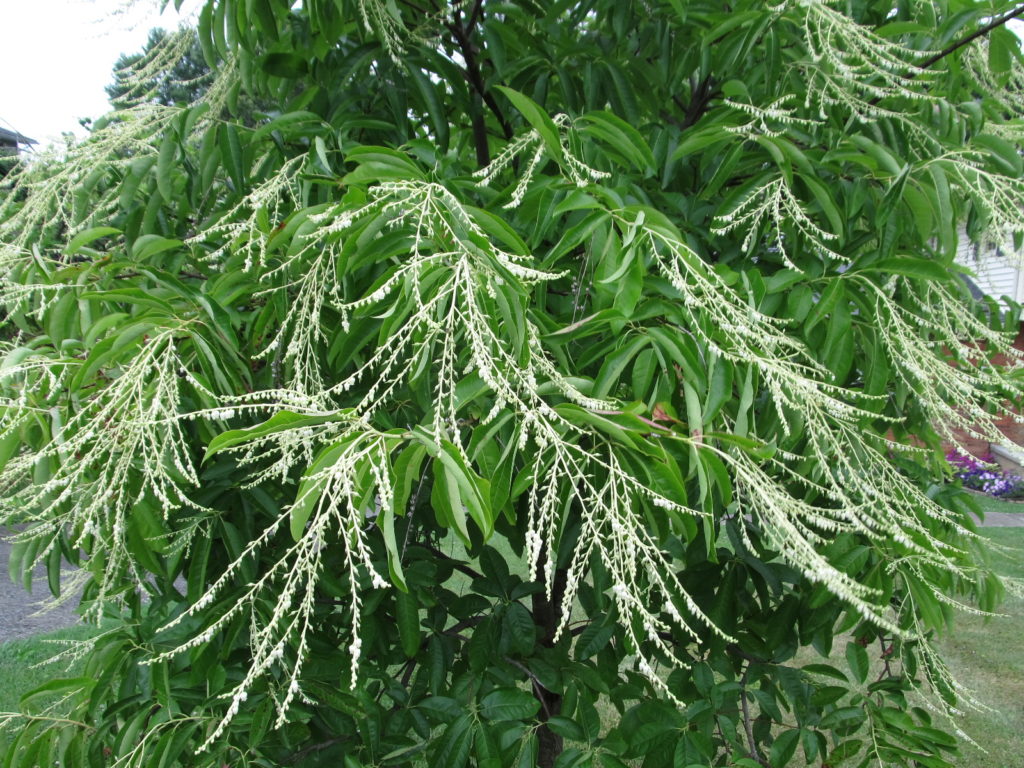
Other than crape myrtles, few trees bloom in July and August. Here are four exceptions: Chaste tree, Sourwood, Golden Raintree, and Franklinia.
Chaste Tree (Vitex agnus-castus) is a 10-15 feet tall, vase-shaped, deciduous shrub or a small 15-20 feet tree. The species is native from southern Europe and Asia. It is often mistaken as a purple-flowering crape myrtles which are so common locally. Its grayish green foliage is palmately compound and aromatic if you crush the leaf. Airy panicles composed of tiny, fragrant, lavender to pale violet flowers (to 12″ long) appear in early to late summer and attract numerous bees and butterflies.

Sourwood (Oxydendrum arboreum), aka lily of the valley tree, is a deciduous native tree found in the TN, VA and NC woodlands. A member of the Heath plant family, which includes azaleas, rhododendrons, and mountain laurels, sourwood prefers an acidic soil. The tree (or multi-branched shrub) grows 20-25 feet tall (50 feet or higher in the wild). Finely-toothed, 5-8 inch long, glossy green leaves produce one of showiest red fall hues. Terminal 4-8 inch long panicles of white lily-of-the-valley flowers drape off branch tips in early summer. Flowers are slightly fragrant. Long-lasting dried flower panicles are present through September, and attract many bees. Sourwood honey is a tasty result sold at local gift shops.

Goldenrain Tree (Koelreuteria paniculata) is a medium-sized, open-branched, deciduous tree with a rounded crown. Native to China, it grows 30-40 feet tall and almost as wide. Its pinnate or bipinnate compound leaves, up to 18 inches across, are comprised of 7-17 irregularly lobed leaflets. The bright green, blemish -free summer foliage turns yellow in fall. Bright yellow flowers (each 1/2 inch wide) appear in early July as part of terminal 12-15- inch panicles. Flowers give way to brown lantern-like, papery seed capsules in fall. Caution: the non-native tree produces many seedlings and is listed “invasive” in some states.
Franklinia (Franklinia alatamaha) is known as the “Ben Franklin tree”. This small native tree is finicky to establish. It produces showy 2 – 3 inch pure white camellia-like flowers with showy golden yellow stamens from mid-August thru September. The blooms are sweetly-fragrant. Narrow, oblong-obovate, glossy dark green 3-5 inch long leaves turn multi-shades of orange, red and purple in autumn. Branching is upright and spreading to create an open airy. Franklinia is extinct in the wild and sold by native plant nurseries.
General care recommendations: all four trees prefer a moisture, mildly acidic, well-drained soil and full sun (morning sun for franklinia).

 Posted in
Posted in 
